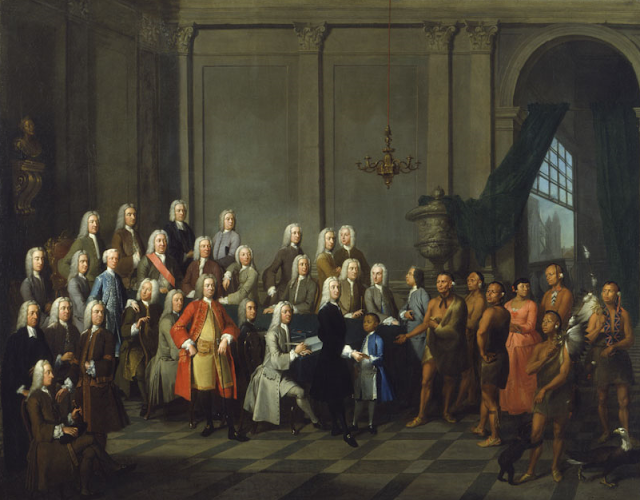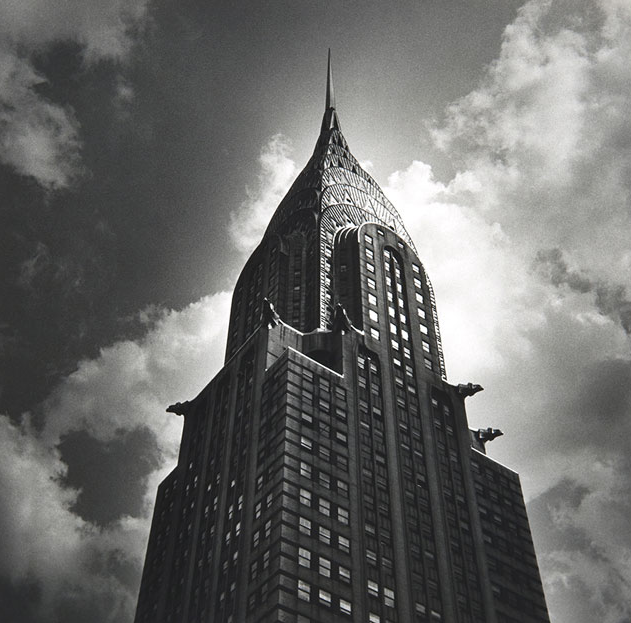.
Installation view. © Matthew Holler.
Flowers have been a focus of artists worldwide throughout the history of art. Rarely, however, is the floral-inspired artwork by one of the 20th century’s most celebrated artists displayed in a garden setting while showcasing paintings never before publicly displayed.
An exhibition of Marc Chagall’s nature-inspired artwork is on view in a world-renowned Florida botanical garden in an immersive exhibition that introduces a new way of examining the artwork of the prolific artist. Included in the exhibition are the masterwork painting The Lovers (1937), on loan from the Israel Museum, Jerusalem, along with two additional paintings, loaned from a private collector, that have not been publicly exhibited before.
“For this artist, flowers were life itself,” said Dr. Carol Ockman, curator at-large for Marie Selby Botanical Gardens and Robert Sterling Clark Professor of Art at Williams College. “They [flowers] are a response to Chagall’s traumatic life experiences, as well as the source of his boundless hope displayed in his artwork.”
Marc Chagall, Flowers, and the French Riviera: The Color of Dreams at Marie Selby Botanical Gardens in Sarasota, Florida will be on view through July 31, 2017. The paintings are accompanied by the artist’s personal effects – including vases from his private home – along with a collection of archival photographs that chronicle Chagall’s life.
Visitors at the 15-acre, bayfront garden will wander through a glass house conservatory where reproductions of Chagall’s nature-inspired stained glass are being displayed among living plants. The grounds of the gardens are being enhanced with flora such as orchids, bromeliads, bougainvillea and citrus trees that evoke the south of France, the land that inspired Chagall and where he spent much of the later part of his life. Accompanying cultural performances, special events, classes and lectures will be part of the exhibition, which encourages visitors to use all five senses, immersing themselves in the dream world created by Chagall in his artwork.
“Evoking Chagall’s last home, the fairytale village of Saint Paul de Vence, The Color of Dreams capitalizes on the sun-kissed climate of Sarasota to conjure the French Riviera, which long has had a special lure for artists,” Ockman said.
The two private paintings making their public debut in the exhibition are Bouquets de Lilas à Saint Paul de Vence (Bouquets of Lilacs at Saint-Paul) (1978) and Couple aux Muguets (Couple with Lilies of the Valley) (1973). Lilas features two large vases containing lilacs that tower over the distant sunlit village framed in the background, and a figure stretched out in the left foreground. In Couple aux Muguets a man and woman standing behind a light-filled window affectionately embrace – a theme common in Chagall’s work – behind two vases holding abundant bouquets of white lilies-of-the-valley nestled in their large emerald-green leaves. Above Chagall’s signature, the piece is inscribed to his daughter Ida: “Pour Ida, Papa.”
While Chagall’s work has been examined many times and in many ways, from his Jewish upbringing to his origins in Lithuania, and as a modern artist inspired by his life in France, this is the first time an exhibition removes those classifications and reviews the artist as a naturalist. The Archives de Marc et Ida Chagall have endorsed the exhibition’s unique study of Chagall’s love of nature. The estate is managed in part by Chagall’s granddaughters, Bella and Meret Meyer.
“My grandfather was in awe of flowers,” said Bella Meyer, who is also the founder and artistic director of Fleursbella in New York City. “When we were children, together with my mother we would always bring him an armful of flowers from a nearby market, when visiting him in the South of France. How exciting to have an exhibition devoted to his love for flowers at the center of a botanical garden where viewers will be able to be inspired by both his art and the color and light of the natural world around.”
This is the inaugural exhibition in the Jean & Alfred Goldstein Exhibition Series at Selby Gardens. Each installation of the series will blend nature and botanical-inspired master artworks. Marc Chagall, Flowers, and the French Riviera: The Color of Dreams is presented by The Jewish Federation of Sarasota-Manatee.
“Our Gardens has the opportunity to immerse people into the landscape of flowers and seaside beauty that creates the inspirational dreamscape of Marc Chagall,” said Jennifer O. Rominiecki, president and CEO of Selby Gardens. “This is a one-of-a-kind experience to come to a garden, encounter Chagall’s international works of art and be immersed in the natural world that inspires so many.”
An exhibition of Marc Chagall’s nature-inspired artwork is on view in a world-renowned Florida botanical garden in an immersive exhibition that introduces a new way of examining the artwork of the prolific artist. Included in the exhibition are the masterwork painting The Lovers (1937), on loan from the Israel Museum, Jerusalem, along with two additional paintings, loaned from a private collector, that have not been publicly exhibited before.
“For this artist, flowers were life itself,” said Dr. Carol Ockman, curator at-large for Marie Selby Botanical Gardens and Robert Sterling Clark Professor of Art at Williams College. “They [flowers] are a response to Chagall’s traumatic life experiences, as well as the source of his boundless hope displayed in his artwork.”
Marc Chagall, Flowers, and the French Riviera: The Color of Dreams at Marie Selby Botanical Gardens in Sarasota, Florida will be on view through July 31, 2017. The paintings are accompanied by the artist’s personal effects – including vases from his private home – along with a collection of archival photographs that chronicle Chagall’s life.
Visitors at the 15-acre, bayfront garden will wander through a glass house conservatory where reproductions of Chagall’s nature-inspired stained glass are being displayed among living plants. The grounds of the gardens are being enhanced with flora such as orchids, bromeliads, bougainvillea and citrus trees that evoke the south of France, the land that inspired Chagall and where he spent much of the later part of his life. Accompanying cultural performances, special events, classes and lectures will be part of the exhibition, which encourages visitors to use all five senses, immersing themselves in the dream world created by Chagall in his artwork.
“Evoking Chagall’s last home, the fairytale village of Saint Paul de Vence, The Color of Dreams capitalizes on the sun-kissed climate of Sarasota to conjure the French Riviera, which long has had a special lure for artists,” Ockman said.
The two private paintings making their public debut in the exhibition are Bouquets de Lilas à Saint Paul de Vence (Bouquets of Lilacs at Saint-Paul) (1978) and Couple aux Muguets (Couple with Lilies of the Valley) (1973). Lilas features two large vases containing lilacs that tower over the distant sunlit village framed in the background, and a figure stretched out in the left foreground. In Couple aux Muguets a man and woman standing behind a light-filled window affectionately embrace – a theme common in Chagall’s work – behind two vases holding abundant bouquets of white lilies-of-the-valley nestled in their large emerald-green leaves. Above Chagall’s signature, the piece is inscribed to his daughter Ida: “Pour Ida, Papa.”
While Chagall’s work has been examined many times and in many ways, from his Jewish upbringing to his origins in Lithuania, and as a modern artist inspired by his life in France, this is the first time an exhibition removes those classifications and reviews the artist as a naturalist. The Archives de Marc et Ida Chagall have endorsed the exhibition’s unique study of Chagall’s love of nature. The estate is managed in part by Chagall’s granddaughters, Bella and Meret Meyer.
“My grandfather was in awe of flowers,” said Bella Meyer, who is also the founder and artistic director of Fleursbella in New York City. “When we were children, together with my mother we would always bring him an armful of flowers from a nearby market, when visiting him in the South of France. How exciting to have an exhibition devoted to his love for flowers at the center of a botanical garden where viewers will be able to be inspired by both his art and the color and light of the natural world around.”
This is the inaugural exhibition in the Jean & Alfred Goldstein Exhibition Series at Selby Gardens. Each installation of the series will blend nature and botanical-inspired master artworks. Marc Chagall, Flowers, and the French Riviera: The Color of Dreams is presented by The Jewish Federation of Sarasota-Manatee.
“Our Gardens has the opportunity to immerse people into the landscape of flowers and seaside beauty that creates the inspirational dreamscape of Marc Chagall,” said Jennifer O. Rominiecki, president and CEO of Selby Gardens. “This is a one-of-a-kind experience to come to a garden, encounter Chagall’s international works of art and be immersed in the natural world that inspires so many.”

















